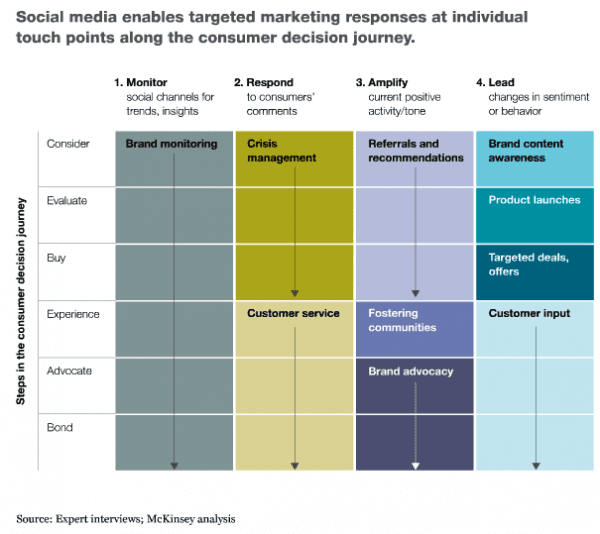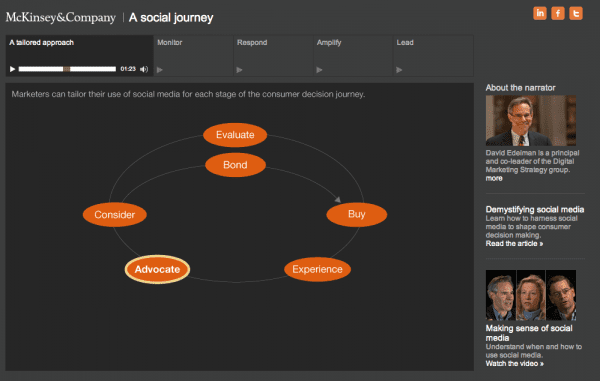Explaining the value and relevance of colleagues to social media
Value: [rating=4]
Recommended link: McKinsey Quarterly - free report - no registration required
The report presents a clear framework, based on expert interviews for four areas needed to manage social media marketing:

Explaining the value of social media is a challenge for many working in marketing today, whether to yourself, colleagues or clients, so we’re alerting you to this report since it may help you clarify the benefits and approaches to managing social media in a business.
The advice has the gravitas of McKinsey who have been contributing thoughtful advice on online marketing strategy approaches since 1995. Well known social media commentator David Edelman is one of the main authors.
The four areas are:
1. Monitor. Repeating the advice often given to “Listen First”. The article gives the example of Gatorade social monitoring and response we featured last year.
The article emphasises this should be a default social media marketing function, thanking place constantly to assist with customer service, reputation management and new product development. The framework shows this monitor, review and feedback process should affect the whole of the business.
2. Respond. Going beyond what it calls “broad and passive monitoring”, this activity involves responding at an individual level to help manage negative commentary or accentuate the positive.
3. Amplify. The report recommends building social media into marketing campaigns from the outset. This is the core of the report, showing the need for inclusion of social media within campaigns and “always-on” content or inbound marketing, although it doesn’t use these labels.
“It means that the core concepts for campaigns must invite customers into an experience that they can choose to extend by joining a conversation with the brand, product, fellow users, and other enthusiasts”.
“It means having ongoing programs that share new content with customers and provide opportunities for sharing back. It means offering experiences that customers will feel great about sharing, because they gain a badge of honor by publicizing content that piques the interest of others”.
4. Lead. “Lead” refers to encouraging customers to make “long-term behavioural changes” i.e. towards increased purchases from existing customers or advocacy leading to purchase. It gives the example of online menswear company Bonobos, who provided an incentive for its Twitter followers by unlocking a discount code after its messages were resent a certain number of times. As a result of this effort, almost 100 consumers bought products from the site for the first time. The campaign delivered a 1,200 percent return on investment in just 24 hours.
Lead also notes the facility to get product or service-related feedback after purchase can be positive.
If you're studying social media marketing or like frameworks to base your strategies upon, you may be interested in this interactive model of how to use social media across each stage of the buying process:









